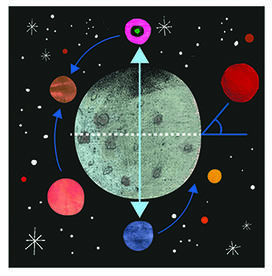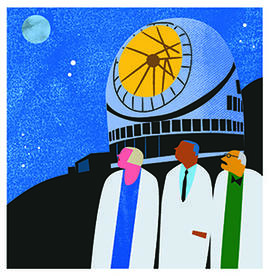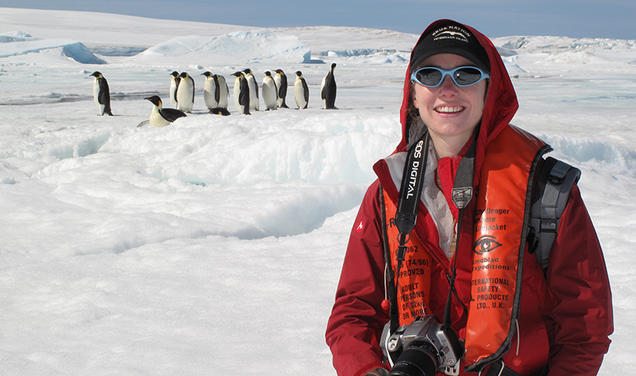As a kid growing up in Deerfield, Illinois, joshua winn subscribed to astronomy magazines, eagerly followed the latest NASA developments, and spent a lot of time at Chicago’s Adler Planetarium. Despite his love of space, it took him a while to realize he could make a career out of it.
Winn dabbled in various areas of physics, including optical and medical physics, while earning his bachelor’s and master’s degrees from MIT. “I was very lucky, because right around the time I graduated [in 1994] was the beginning of what we now understand to be the boom in exoplanet science,” he says. Advancements in detection methods suddenly allowed for the discovery of many new planets beyond our solar system. “It was a real time of opportunity to become part of this whole new area of astronomy.”
Excited by this “growth field,” Winn went on to earn his Ph.D. in physics from MIT in 2001 and hold National Science Foundation and Hubble postdoctoral fellowships at the Harvard-Smithsonian Center for Astrophysics. His research focuses on examining the properties of the more than 5,500 exoplanets that have been discovered to date — such as their orbital structure, mass, and atmosphere — to understand more about how planets form and evolve.
Quick Facts
Title
Professor of Astrophysical Sciences
Time at Princeton
7 years
Recent Class
Topics in Modern Astronomy
WINN'S RESEARCH
A SAMPLING

What Goes Around
The theory of planet formation suggests that in a planetary system, the rotation of the star and the orbital revolutions of its planets should be neatly aligned, with the planets’ orbits and the star’s equator all lying within a single plane. But in 2009, Winn and his team began finding planets that were orbiting their stars in totally new ways: tilted 35 degrees off the equator of the star, rotating perpendicularly over the north and south poles of the star, or even spinning “backwards,” with the planet and star turning in opposite directions. These misaligned orbits have inspired astronomers to further study exoplanet characteristics so they can refine the theory of planet formation.

“Planets Where They Don’t Belong”
Astronomers have theorized that giant planets can only form far away from their parent stars. That’s because these planets need solid materials to form, and common space molecules such as water and ammonia exist as solid materials only when it’s very cold, far away from the heat of a star. But in 1995, astronomers discovered the first “hot Jupiter” — a giant planet so close to its star that it takes just a few days to orbit and likely harbors a molten lava surface. In 2020, Winn published a study examining one such “hot Jupiter,” dubbed WASP-12, whose orbit appears to be gradually shrinking and will result in the planet crashing into its star within a few million years. “We still don’t really understand where these planets came from and what was wrong or incomplete with our original theory,” he says, but such extreme cases “might give us a clue about why the planets are the way they are.”

Finding Earth 2.0
Winn and his team at Princeton are currently working with universities in the United Kingdom to launch the Terra Hunting Experiment, which will use a new Doppler spectrograph and a freshly refurbished telescope in the Canary Islands to monitor a few dozen stars for signs of a planet that resembles our own. “We’ll get more data than anybody has gotten before, so maybe that will be what allows us to detect a kind of Earth 2.0,” Winn says. He expects the project to be operational in about 2025, and it will run for 10 years.











0 Responses